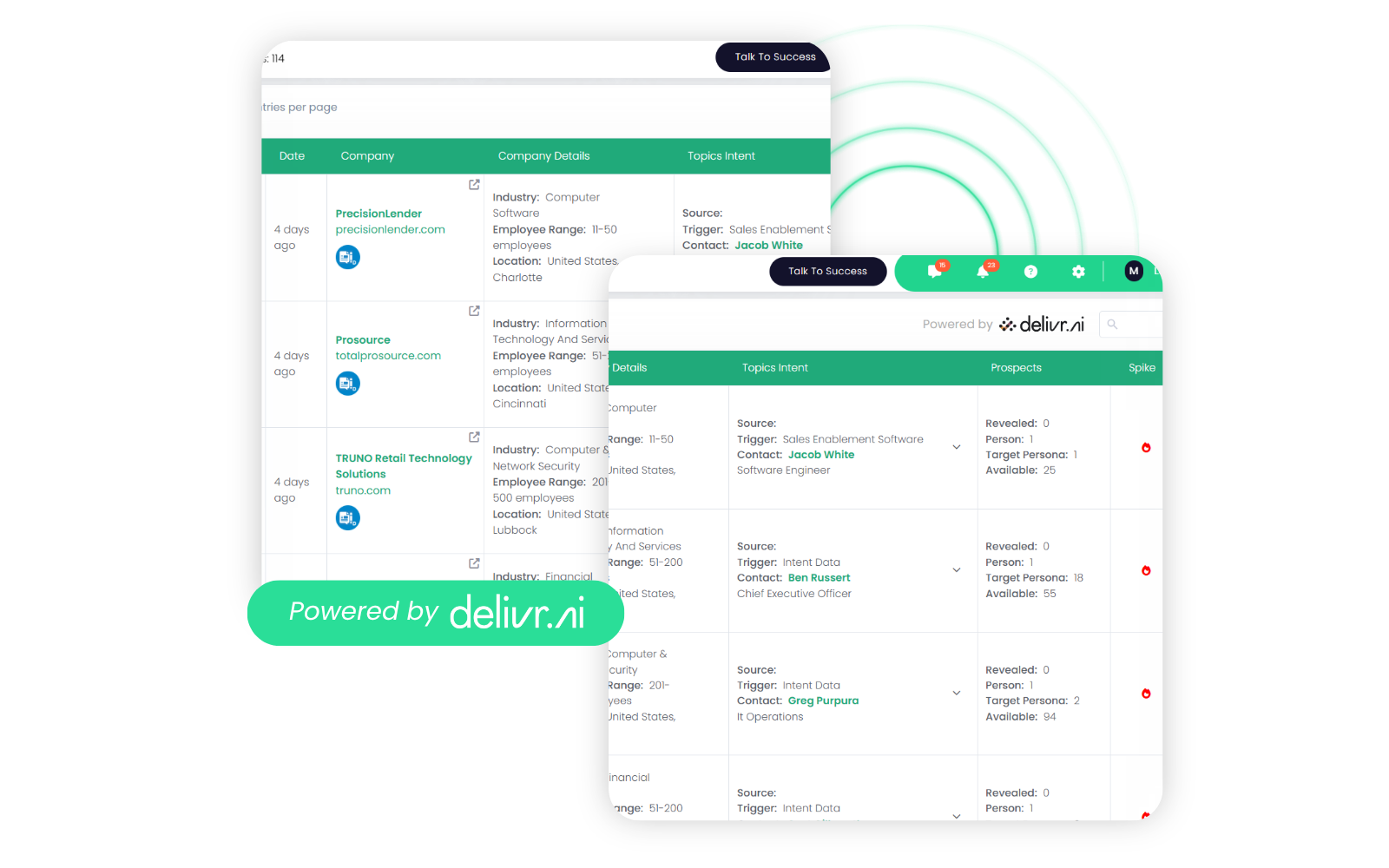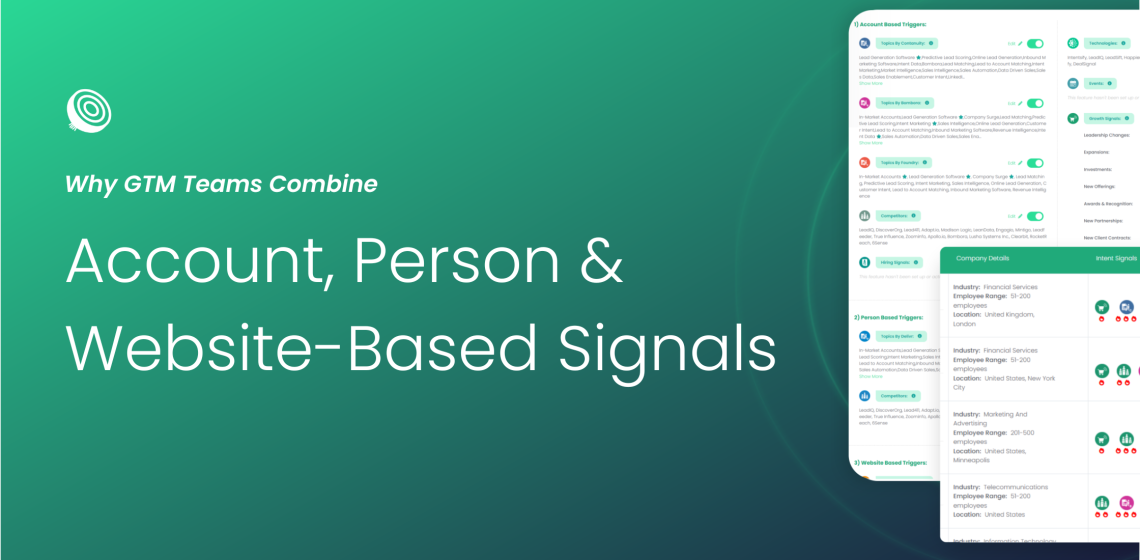Buyer intent isn’t one-dimensional. It’s not just about which company is researching your solution – it’s about who is engaging, where they’re showing up, and what they’re doing once they land on your site.
That’s why modern revenue teams don’t rely on a single signal. They combine account-level, person-level, and website-based intent to get a true, real-time picture of buying behavior.
And with Lead Onion’s 24 unique intent sources, you don’t have to choose.
.png)
You can connect the dots – from market-level surges down to named decision-makers – and strike when interest is high.
Here’s how the layers work together.
Account-Based Intent: The Foundation of Predictive GTM
When it comes to identifying in-market opportunities, account-based intent is non-negotiable. It’s your early warning system – alerting you when a company starts surging around your solution, even if they’re not on your radar yet.
With Lead Onion, you’re not relying on a single intent feed. Our platform pulls from 24 high-quality sources, giving you broader coverage, richer insights, and more accurate surging signals than any single-source provider can offer.
You’ll see:
- Which companies are showing strong topical interest
- How their research is trending over time
- Which ones align to your ICP – and which don’t
This is how you move from reactive marketing to predictive pipeline generation.
Person-Based Intent: The Precision Layer, Powered by Delivr.ai
Account-level data tells you where to aim. Person-based intent tells you who to call.

Through our exclusive integration with Delivr.ai, Lead Onion gives you visibility into individual-level buying behavior – surfacing named contacts who are actively researching relevant topics, reading content, or clicking through ads.
It’s not just about tracking personas. It’s about targeting the real people behind the surge:
- The senior IT lead reading whitepapers
- The ops manager downloading competitor guides
- The CMO clicking your paid ads
These are the signals that turn broad surging interest into targeted, high-converting outreach.
Website-Based Intent: The Conversion Signal
Once those accounts – and people – land on your site, Lead Onion closes the loop.
Website-based intent shows you who’s engaging with your brand right now.
And with autonomous de-anonymization, Lead Onion doesn’t just show you a company. It shows you the contact, the pages visited, and the content consumed – instantly.
No more guessing if that spike in traffic is meaningful. Now you know:
- Who’s been on your pricing page
- How many sessions a decision-maker has had
- When it’s time to pick up the phone
Why You Need All Three
Let’s be clear – account-level intent isn’t going anywhere. It’s still the strategic layer. The market signal.

The reason you know which accounts to prioritize in the first place.
But in a noisy, competitive market, that’s not enough.
When you combine:
- Account surges from 24 sources
- Contact-level signals from Delivr.ai
- On-site behavior tracked in real-time
…you get a true intent ecosystem. One that shows you who’s ready, where they are in their journey, and how to convert them faster.
Don’t Just Spot Intent – Act on It
Intent data isn’t just about knowing who’s interested – it’s about knowing how deep that interest runs, and how to respond.
Lead Onion brings together the full picture:
- Account-level surging interest
- Person-level decision-maker signals via Delivr.ai
- Website-based engagement that tells you when to strike
Want to see how it all connects?
Get started with the world’s first AI-powered Buyer Intent Agent and watch Lead Onion in action.


